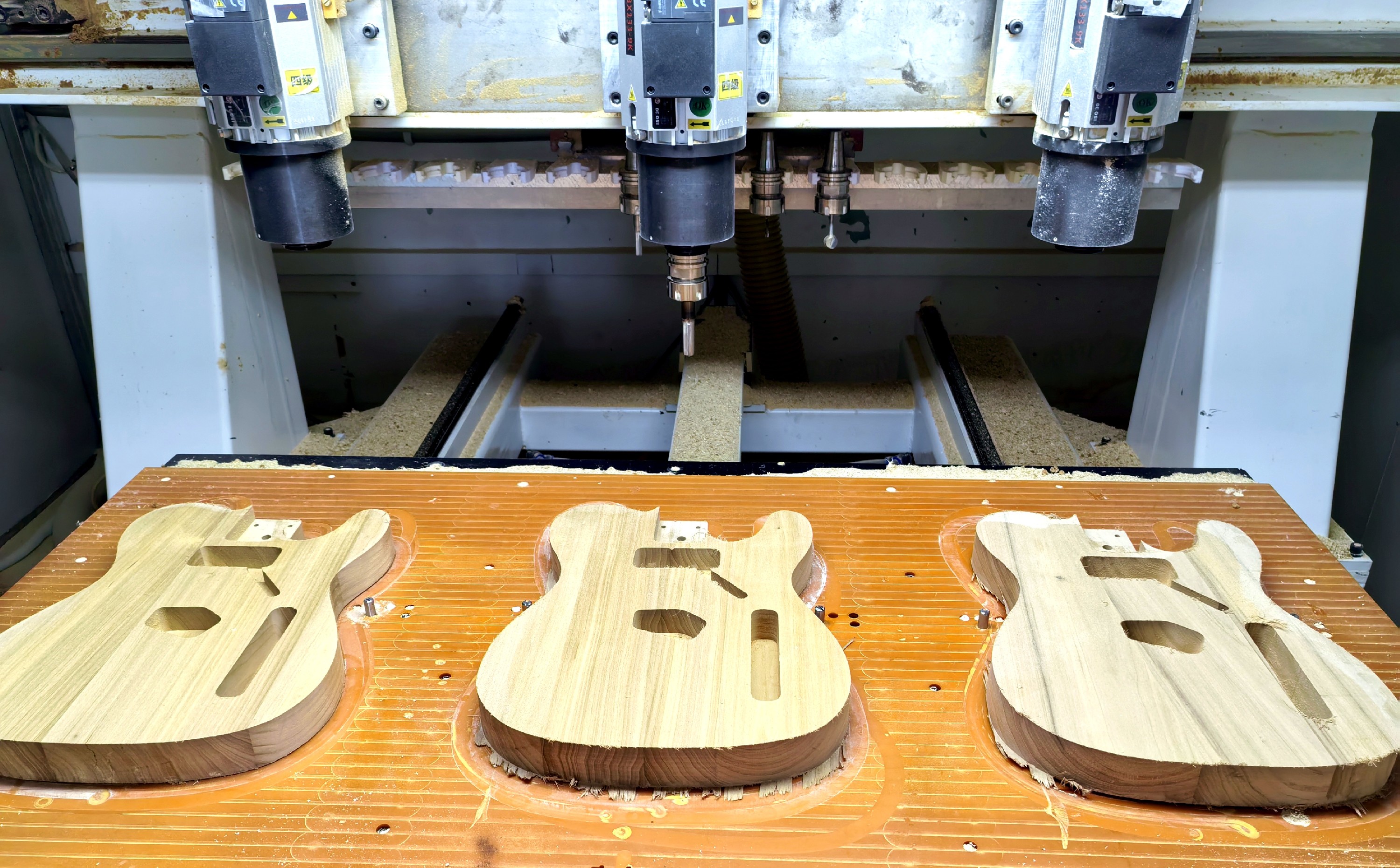01-03,2022 | BY:SAGA Team | 3081

CNC Machining has had a revolutionary impact on the modern guitar manufacturing industry, transforming it from custom handmade craftsmanship to mass production.
In guitar manufacturing, CNC operates as an exceptionally precise and tireless 'digital artisan'. Using pre-programmed digital design files, it controls cutting tools to perform intricate machining operations such as cutting, carving and milling on the material
CNC-precision cutting guitar body
This is the most intuitive application. Whether it's a solid-body electric guitar or a hollow archtop jazz guitar, the body's shape and contours are paramount.
- Shape Cutting: CNC can precisely cut a solid wood or laminate blank into any complex form, whether it's a classic Stratocaster or a futuristic custom model, ensuring each instrument is identical.
- Contour Milling: The curvature of an electric guitar's back and top (such as the Les Paul's body), along with body-hugging contours (comfort cuts), can all be precisely achieved by CNC through three-dimensional milling, ensuring both comfort and aesthetics.
- Cavity carving: For semi-hollow or fully hollow guitars, CNC can mill the internal bracing structures and cavities within the top and back plates with precision.
The core benefits: Ultimate Stability and Vintage Tone
Ultimate stability
This is the most significant and direct benefit of heat treatment. Wood subjected to this 'baking' process can reduce its moisture absorption by up to 50% or more. This translates to:
- Resistance to warping: The top plate becomes less prone to distortion, offering enhanced durability and a longer lifespan.
- Crack resistance: It reduces the risk of cracking in the top due to sudden changes in temperature and humidity, enabling the guitar to adapt better to diverse climatic conditions.
Tone optimisation
Beyond stability, heat treatment delivers unexpected tonal improvements. Torrefaction enables more efficient and unrestricted transmission of sound vibrations. The result is:
- Matured tone: New instruments exhibit an open, warm and dry tone from the outset, reminiscent of aged instruments.
- Enhanced dynamic response: Faster sound initiation, clearer articulation and superior extension across high and low frequencies.
The precision of the neck and fingerboard has a direct impact on the feel and playability of the guitar, and CNC machining plays a crucial role in this regard.
- Neck shaping: The CNC machine cuts the neck wood to the exact thickness and width required to form the initial contour.
- Headstock cutting: Headstock shapes, logo engraving and tuning peg hole positioning can all be completed with precision in a single CNC operation, significantly enhancing efficiency.
- Truss rod slot: Unparalleled precision is achieved in creating the channel for the truss rod within the neck using CNC milling, ensuring smooth rod movement and effective adjustment.
- Fret slots: CNC machines can cut fret slots with exceptional precision, guaranteeing consistent depth, width and spacing.
- Fingerboard inlay grooves: Complex inlay patterns can be effortlessly carved by a CNC machine, which would be an extremely time-consuming and error-prone task if done by hand.
Advantages of CNC Machining
The foremost advantage of CNC machining is its ability to deliver exceptional precision and consistency in guitar manufacturing. It eliminates human error, ensuring that each guitar of the same model is virtually identical and of stable quality – a critical factor in boosting production capacity.
Once programmed, CNC machines can operate continuously, significantly reducing production time and labour costs. This makes high-quality instruments more accessible and affordable.
Furthermore, CNC machining facilitates the realisation of avant-garde and complex guitar designs.
SAGA combines the handmade and CNC Machining
Rather than replacing the luthier, CNC technology has evolved into the most potent tool in the luthier's arsenal at SAGA.
In SAGA, CNC technology is primarily responsible for the 'cutting' and 'shaping' processes. However, other processes that have the greatest influence on a guitar's tone and playability, such as wood selection, drying, jointing, gluing, final sanding and finishing, assembly and setup, are still handle by our experienced luthiers.
Thank you for reading.